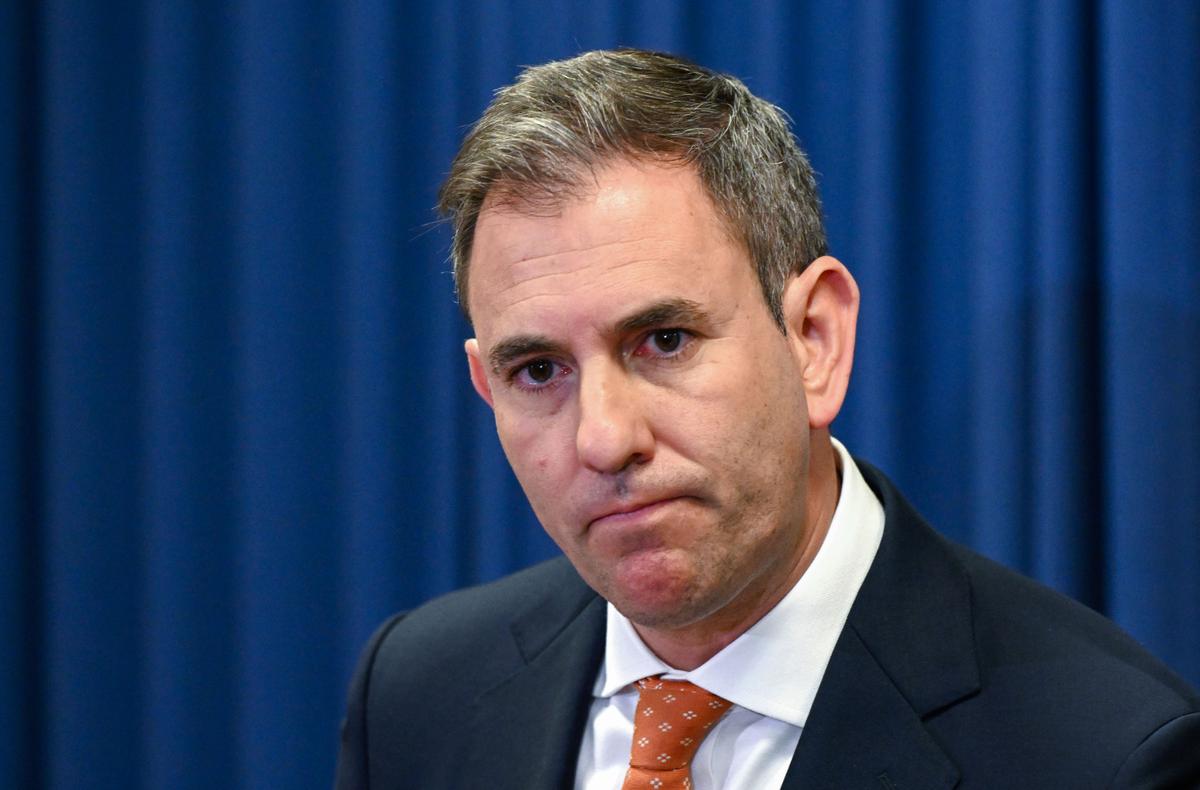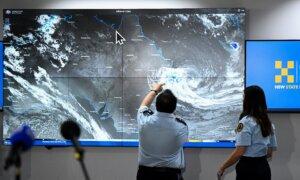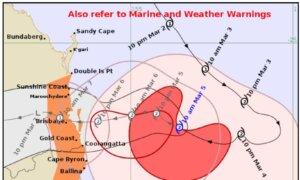Over 4.5 million people are in the path of the category 2 cyclone, the first tropical storm system to hit the region in 50 years.
Cyclone Alfred has yet to make landfall, but the damage estimates are already arriving.
The cost from the category two system is estimated to be in the billions, with one finance analyst predicting a $2 billion (US$1.2 billion) damage bill.
Speaking about the cyclone, Australian Treasurer Jim Chalmers urged residents to be prepared.
“I think like a lot of people in South East Queensland and Northern New South Wales it’s an anxious wait as we wait for the cyclone to cross over,” he said.
“We’re now expecting that to be more like Friday during the day rather than overnight Thursday-Friday, and so people should make the most of this time that we have to prepare.”
“There’s something like 4.5 million people potentially in harm’s way, that’s about 1.8 million homes and we’re expecting billions of dollars of damage.”
If it occurs, this will be the first time in 50 years that a cyclone directly sweeps through Australia’s third most populous city, Brisbane, with the last incident in 1974 when the population was much lower.
Chalmers says the cost of the cyclone could be even steeper than estimated.
“It wouldn’t surprise me if it was north of (billions) in terms of the damages bill,” he said.

Federal Labor Treasurer Jim Chalmers speaks to the media during a press conference at the Commonwealth Parliamentary Offices in Brisbane, Australia on Sept. 25, 2024. AAP Image/Darren England
“And so, I spoke to the CEOs of the major insurers last night to check in to make sure that they had the processes that they need to process a lot of claims. They’ve been doing a lot of work around the clock.”
Insurance companies are working to ensure enough staff availability, given many employees live in the affected areas themselves.
“Obviously, there’ll be a cost to government as well but primarily, or exclusively, our focus is on the human cost of the next couple of days, and also the aftermath, the difficult weeks and months which will follow,” Chalmers said.
The treasurer said the slow-moving natural disaster had allowed time for preparedness, and echoed the sentiments of other leaders in asking locals in affected areas to clean up their yards, fill their bathtubs with clean water, and ensure their government app log-ins were correct—internet reliability can be an issue too.
“Do all of that sort of preparation because when this thing hits you’ll be pleased if you took all the precautionary steps that are being recommended by the experts,” he said.
Credit Ratings Agency Says $2 Billion
S&P Global Ratings credit analyst Craig Bennett also predicted the damage bill at around the $2 billion mark, based on current projections.
“A cyclone hitting a major city like Brisbane can result in elevated property damage and insurance claims and may include significant business interruption,” he said.
“Most rated insurers have already enacted emergency disaster management plans.”
The most recent Bureau of Meteorology update states Cyclone Alfred is moving towards the coast at a slow speed of 7 kilometres per hour, and is looking like it will cover a 200 kilometre stretch of coastline from the Sunshine Coast all the way to Ballina in New South Wales.
Current predictions have it crossing the coast late Friday or early Saturday.







